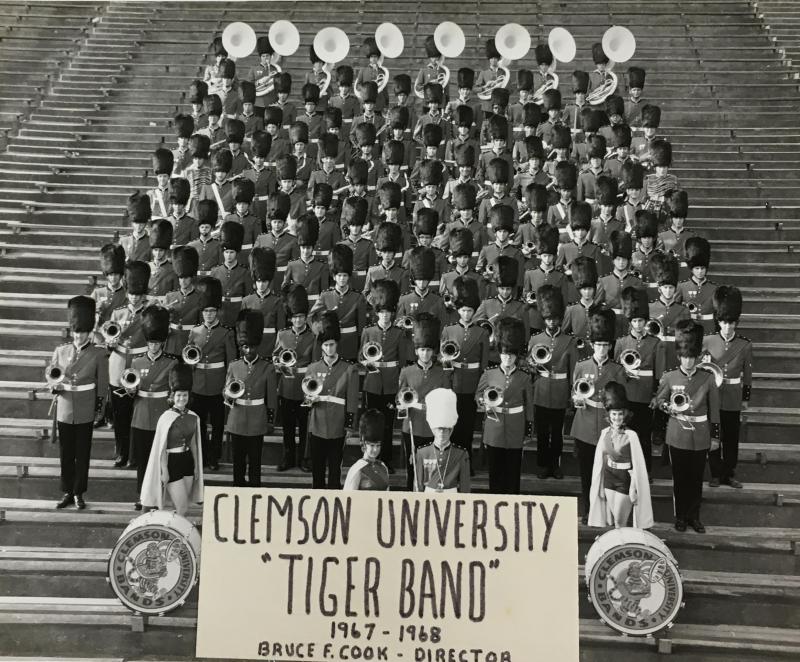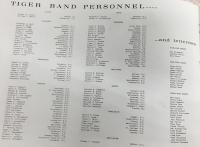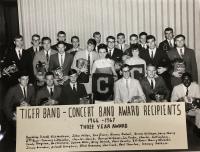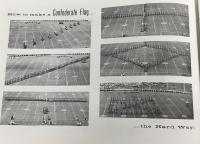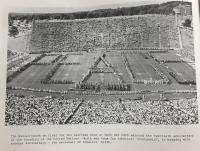Desegregating the Tiger Band, 1964–
While the athletics department was slow to integrate, the music program was much quicker to welcome its first two African American members. In 1964, just one year after Harvey Gantt's admission to the University, the Tiger Band, then under the direction of Bruce Cook, admitted Larry Nazry and Louis Lynn, who played the trombone and clarinet respectively. Not only were they the first two African American members of the band, Nazry was also among the first African American students to graduate in four years, and Lynn now serves on Clemson's Board of Trustees.
Nazry was in the band all four years and record of his participation can be found in almost every group photo of the whole band together, as well as in several photos of band members who had received awards for both participation and merit. Lynn, on the other hand, does not appear as frequently, and with little to no textual archival evidence regarding either of them, it is difficult to say exactly why that is. There is, however, video evidence of their time in the band. One video, which I have unfortunately not been able to find, recounted by Jerome V. Reel in the second volume of his book The High Seminary, features Nazry specifically. There is also archival evidence that this video may exist, or may have existed at one time. According to the 1964 Band Department Brochure, the Tiger Band performed their halftime show at an NFL game between the Vikings and the Colts; and according to Reel, Nazry is highlighted in the video as a key player. If this is true, this would have been a very big deal, and a major moment in both Nazry's career with the Tiger Band and likely for many other African American people in Clemson and beyond.
Another video, which can be found by following this link, was produced earlier this year and posted to the ACC Network's Twitter account. This video features both Nazry and Lynn, now in their seventies, talking alongside several of the other "first" African American students to attend Clemson University. In this video, these alumni discuss their experiences at Clemson, and recount in particular the time when the University paid for them to travel to attend the funeral of Dr. Martin Luther King, Jr. Near the end of the video, Nazry and Lynn are shown outside on a lawn on the Clemson campus with their instruments, laughing and reenacting some of the marching band drill they remembered from their college days.
However, it is important to note once more the archival silence regarding both Nazry and Lynn and their time as members of the Tiger Band. What we know about their experience and their reception comes primarily from the aforementioned February 2020 video, and from Reel's book, but not from the archives. We must also contend with the issue of typos and whether or not they serve as intentional archival sabotage, or if they are merely simple mistakes. In Taps, Clemson's annual yearbook, Nazry's name is constantly misspelled across his four years in attendance, something which occurs in other documents as well. It is impossible to know if that was done intentionally to spite him because he was a Black man at a school that was until two years before his arrival an all-white school, or if it was a simple mistake because his name is uncommon. Either way, it makes it nearly impossible for the historian to compile archival evidence relating to him and to develop a strong paper trail.
